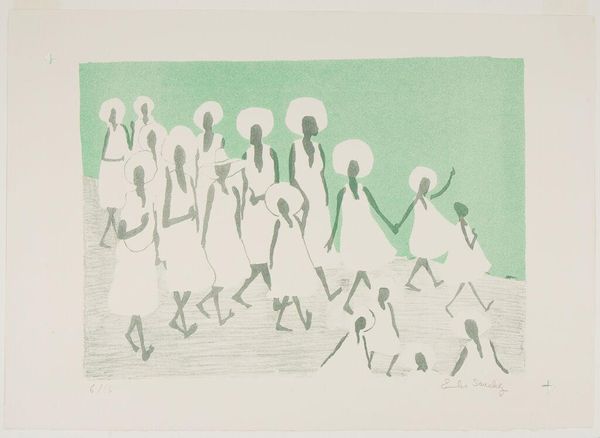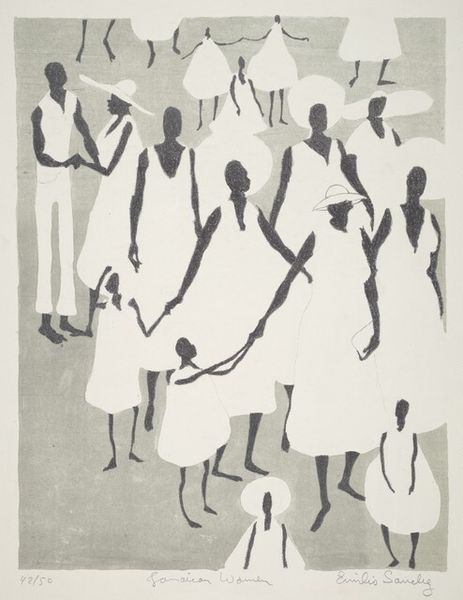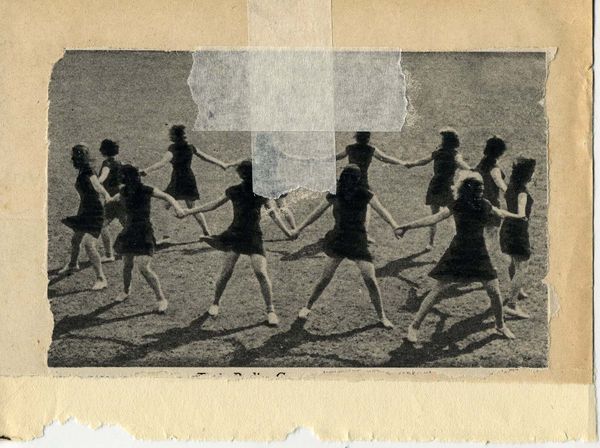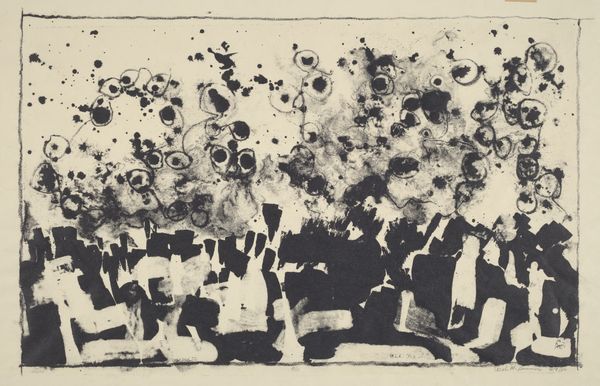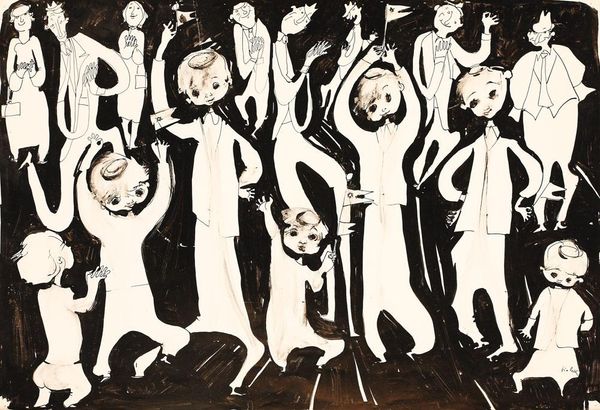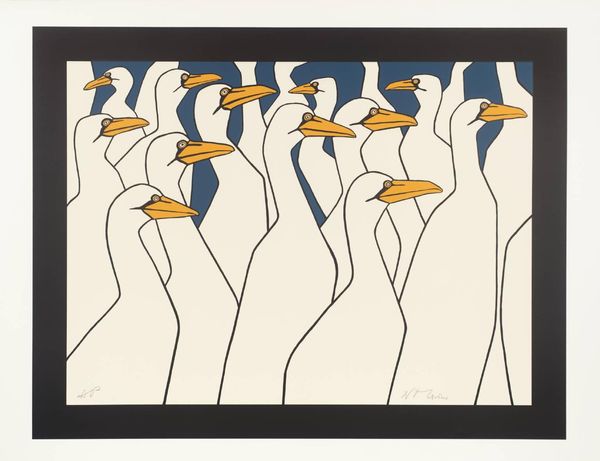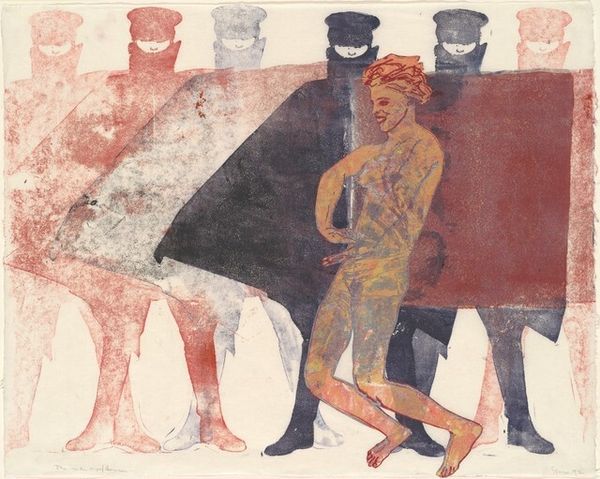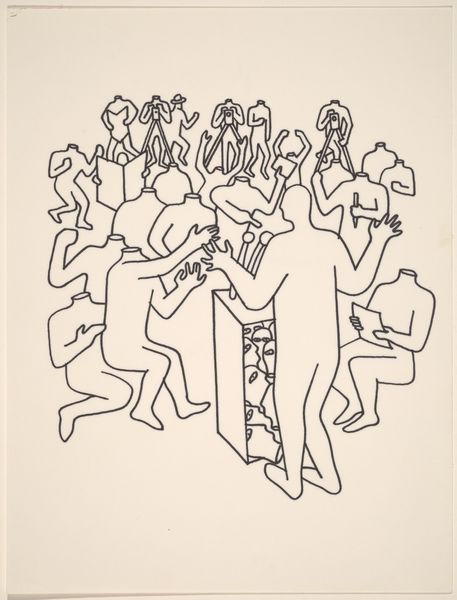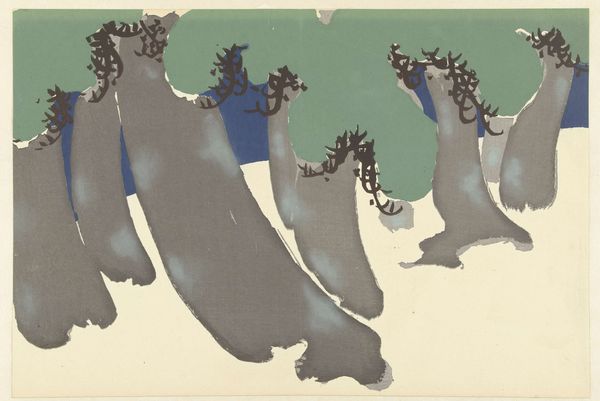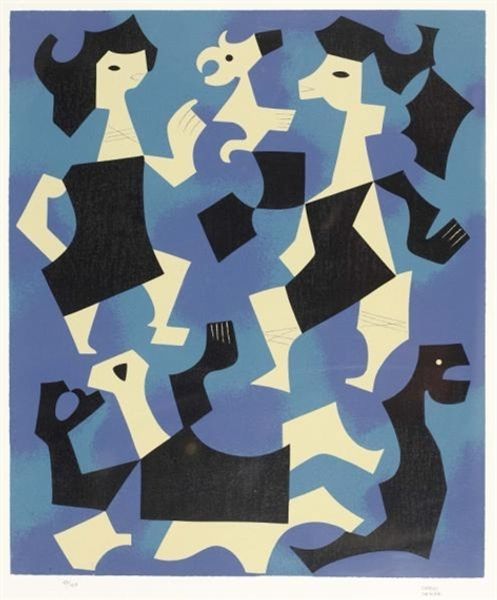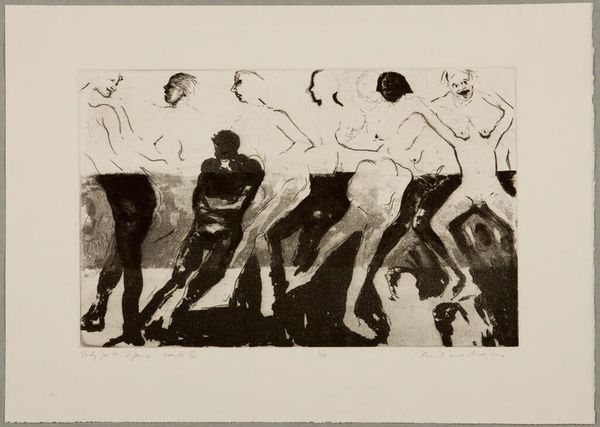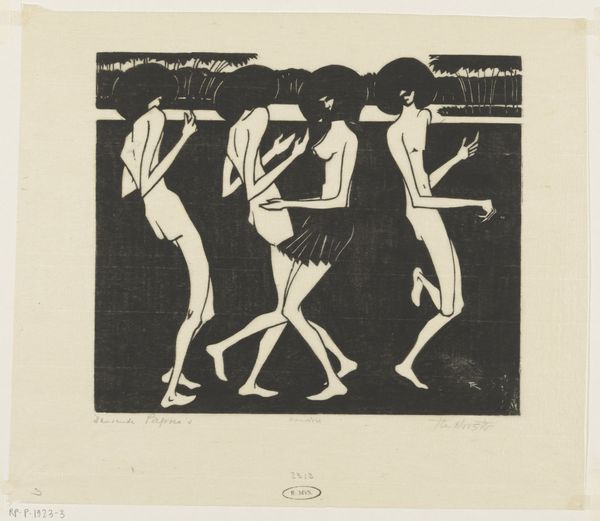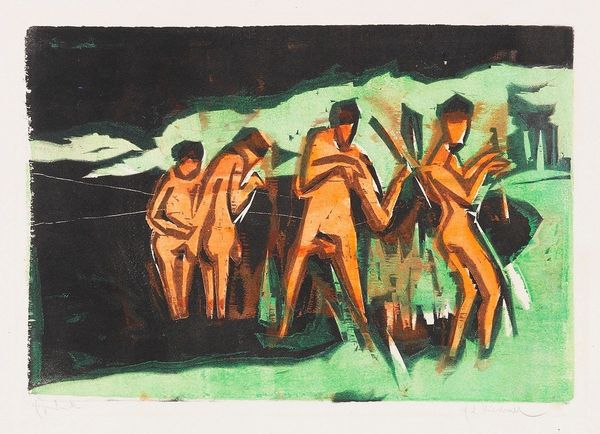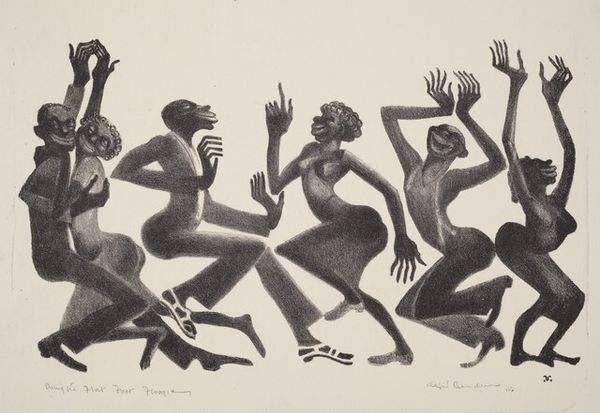
graphic-art, print
#
graphic-art
#
cubism
# print
#
landscape
#
figuration
Dimensions: image: 24.3 x 34.5 cm (9 9/16 x 13 9/16 in.) sheet: 32.1 x 41.9 cm (12 5/8 x 16 1/2 in.)
Copyright: National Gallery of Art: CC0 1.0
Curator: Emilio Sanchez’s graphic work, Negritas Pasendo, dating from around 1955, presents a study in simple form. Editor: It does possess a quietude, almost serene despite depicting so many figures in what seems like a procession. Curator: Absolutely, the reductive palette of light gray, white, and pale green enforces a formalist reading, the figures becoming shapes within the larger composition. Note how each figure’s clothing, represented in flat white, contrasts so sharply with the simplified gray form of the bodies. The composition has been expertly designed to balance color and void. Editor: While I appreciate your attention to form, one can't ignore the loaded implications here. The figures—dark silhouettes adorned in white, likely connoting specific historical roles in Caribbean or Latin American societies in the 50s—warrant an interrogation of class and colonial legacy. What does the anonymity signify, en masse like that, and why present only implied details, never distinctly portrayed? Curator: I interpret the abstracted forms as moving towards the universal rather than a representation of specifically-coded identities, focusing on basic shape rather than detail in a classic modernist trope. It appears influenced by cubism. The composition allows us to discern multiple perspectives without overwhelming us with minute descriptive features. Editor: Even abstraction occurs within history. Consider Sanchez's own background, his perspective in representing this cultural panorama. It provokes necessary discomfort. There's also a flattening in this image of identity through form, perhaps unconsciously mimicking societal imbalances present during that time. How does the light, both in color and implied direction, hit these simplified figures, particularly considering social structures that defined what their skin colors signified? Curator: I recognize your concerns, but it's also important to view artwork like this with an eye to its historical context as well as with the creator's individual concerns. His work suggests, to me, formal questions around flatness and perspective being worked out and given form. Editor: Understanding formal strategies certainly helps appreciate how art produces and circulates ideas. This approach only enhances rather than inhibits more radical interpretative efforts. Curator: Fair point. Thank you for guiding us into such thoughtful depths of discussion. Editor: The pleasure was entirely mine.
Comments
No comments
Be the first to comment and join the conversation on the ultimate creative platform.
